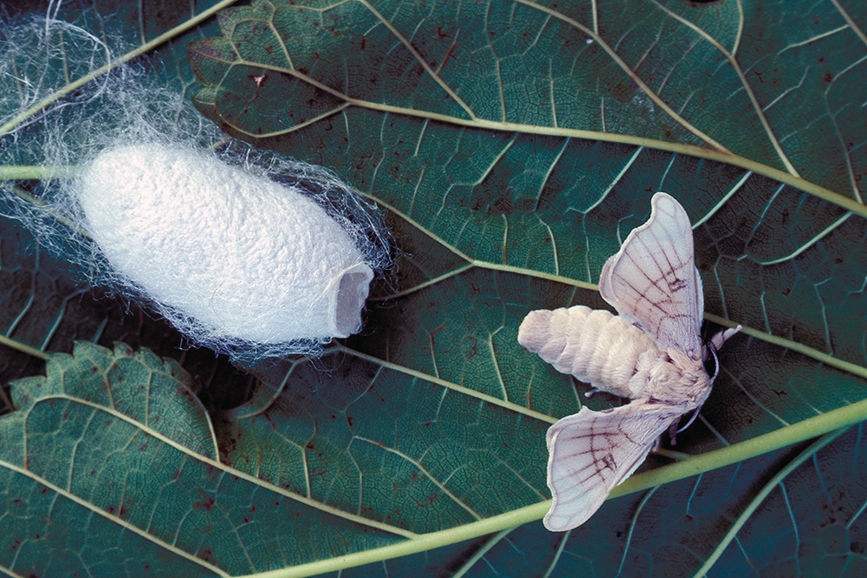Silkmoth, also called the silkworm moth, is the imago (adult form) of the silkworm, a domesticated caterpillar used for silk production. The silkmoth is the only fully domesticated insect. It was domesticated around 2700 B.C. in China. Its closest relative in nature is the wild silkmoth.

The domestic silkmoth is a large-bodied, whitish moth with brown lines on its wings and body. The moth measures more than 2 inches (5 centimeters) from wing tip to wing tip. Its body is short and thick. Its legs are stout. On its head are two long, feathery antennae.
After a silkmoth emerges from its silky cocoon, it mates with other individuals the silk farmer places it with. Like many moths, adult silkmoths are unable to eat food, living on stored reserves of energy. Imagos live for about a week. A female silkmoth lays up to 500 eggs in summer or fall. The silk farmer usually provides special strips of paper for the moth to lay her eggs on.
Silkmoths have been bred for thousands of years to increase their silk production, improve their resistance to disease, and make them easier to raise. But breeding has also caused silkmoths to lose several traits needed to survive in the wild. The moths have lost their darker coloration, so insect-eating animals can easily find and catch them. Adults cannot maintain flight, so males cannot easily find females to mate with after emerging from their cocoons. As a result of these changes, domestic silkmoths can only survive with human assistance.
In addition to the caterpillar’s importance as a source of silk, the adult silkmoth has served as an important model species for researchers. The first pheromone ever described, called bombykol, was isolated from the silkmoth. Pheromones are chemicals used by animals to communicate with others of their species.
